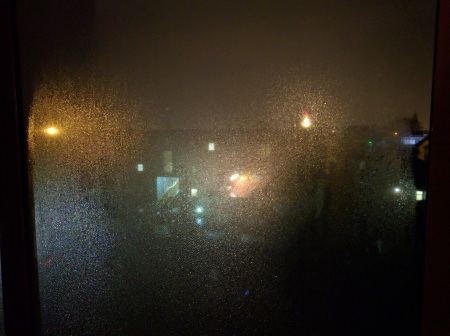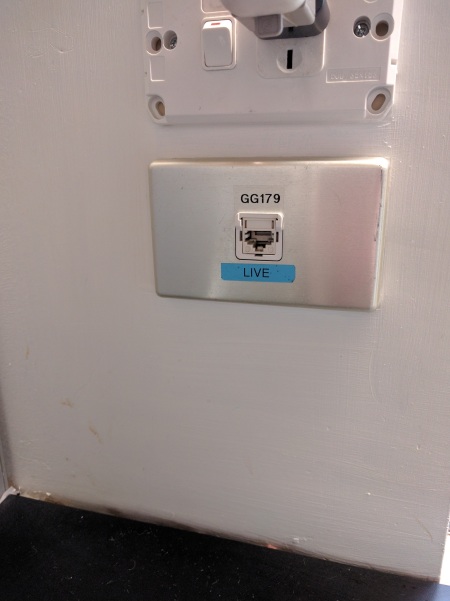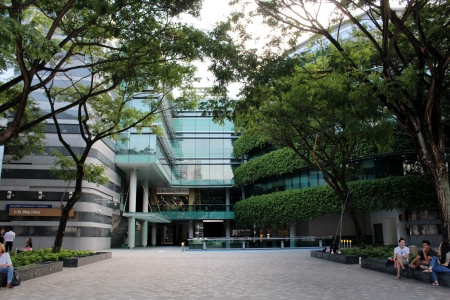“If we want to know what American normality is – what Americans want to regard as normal – we can trust television”—David Foster Wallace
“Let’s just plop them in front of the TV. I was raised in front of the TV and I turned out TV.” – Homer Simpson
“I don’t think I believe in ‘deep down’. I think that all you are is just the things that you do.” – Diane, Bojack Horseman
Now I don’t recommend anyone drop out of school to join Netflix University (though tuition is considerably cheaper), but there’s a lot to be learned in a great deal of T.V. programming.
A few examples: Jon Stewart taught an entire generation of young adults that politics could be interesting, that it’s acceptable (even necessary) to call BS when it matters, and that relentless reason can prevail in the face of stupidity. Or consider The Wire: HBO’s crime drama used nuanced characters and a remarkable storyline to shed light on the personal side of drug prohibition and the relationship between police and the communities they serve. And what about Breaking Bad? Walter White forced us to examine our morals, he made us question what we would do if backed into a similar corner, and he ultimately reminded us to cherish our loved-ones.
I could go on.
The point is, when you plop down in a comfy chair to mainline a few hours of entertainment via the occipital lobe, you’re not just watching a bunch of colorful images flash by at 25 frames per second, you’re absorbing ideas, and the extent to which you do this is directly related to how closely you pay attention. If you want to really learn, you have to engage. You have to sit down and watch on a regular basis. You have to catch up when you miss segments.
This makes T.V. shows a lot like college courses.
And just as the first few episodes of a show give the viewer enough information to decide to keep their eyes glued to the boob tube or to log out of Netflix, the first few classes provide the college student with a decent impression of the course.
So here are my reviews of the University of Otago’s 2nd-semester programming:
Environmental Chemistry: This class belongs on HGTV. Very late at night. Guaranteed to bore all but the most enthusiastic viewer, sections of Environmental Chemistry are as about stimulating as watching beige paint dry. One can only hear ‘biogeochemical cycles’ so many times before tuning into a different program. The host is an inoffensive, well-dressed man who is primarily concerned with relaying PowerPoint information on the underlying chemical processes of the dispersal of various minerals in ocean water. I almost fell asleep writing the end of that sentence. That being said, the course is incredibly practical and is likely to impart fundamental information to the dedicated viewer, if they can stay awake through the entire 50-minute segment. Final verdict: Two thumbs way neutral. Enroll if you need it.
Conservation Biology Lab: A nature-themed mockumentary set on an Otago peninsula overlook, this lab features the will-they-or-wont-they relationship between an American yellow-eyed penguin researcher, a local Department of Conservation ranger, and the 20 endangered birds they watch over. This week’s episode featured the daring repair of a penguin leg wound by our DoC ranger, and the consequent swooning of the researcher. In addition to awkward, hyper-realistic dialogue, the program treats viewers to wide-angle mountain shots, footage of craggy beaches, and effortless steady-cam recordings through sheep farms (the camera work is so immersive you can almost smell the sheep crap!). The cinematography and hilarious script make the 45 minutes of bus seat reel on either end of programming worth sitting through. Two thumbs way up, take this class!
Conservation Biology: This class is on too early in the morning for any young adult to watch consistently. Fortunately, episode summaries are available online and give morning-averse enrollees the basic gist. Dedicated fans that tune in regularly are rewarded with compelling (if incredibly depressing) plots about the condition of the environment. Taught by a rotating cast of knowledgeable hosts, this class is Otago’s NOVA: if more people could be bothered to watch it, the world would be a better place. However, this reviewer believes it would be a breach of journalistic ethics to pass judgment on a program he’s only seen twice. Review: N/A.
Creative Non-Fiction Tutorial: an eccentric host and diverse cast of contestants make this tutorial fit for Bravo. The earnest performance and genuine humor of host Paul Tankard make seemingly-dull program segments like ‘Let’s Outline All the Different Sources Consulted in Chapter 11 of Stiff by Marry Roach, I Found 25, See How Many You Find’ (or as some refer to it: LOATDSCIC11OSBMRIF25SHMYF) shine. This show promises to build toward an exciting climax as each student completes different challenges each week while working toward a final project. The only thing that could spice up CN-FT would be a weekly elimination round. Two thumbs way up, take this class!
Creative Non-fiction: Long-winded dramatic monologs and Spartan use of technology make this class a treat for the writing aficionado. The verbose and enthusiastic Australian lead performs for an enrapt audience, providing advice for budding writers with sprinklings of endearing anecdotes from his bushy-bearded mouth. The Joy of Painting meets Hamlet. Take this class.
Environmental Chemistry lab: Fear not University of Otago Masochist Society, have we got a show for you! If you love the sound of a clock endlessly ticking amid keyboard clickclackery, the incessant flare of fluorescent lighting and computer screens, and the belaboring of basic statistics to the point of insanity, you will love 204 labs! To boot, it’s only on during Friday afternoons from 2-6! And get this: You get to watch other people driving home to have fun out of the meager classroom window while you clickclack away in Microsoft excel! Perhaps this is some sort of edgy, artistic, post-Lynchian program designed to make the viewer uncomfortable, to push their buttons, and to anger and confuse. If that’s the case, it succeeds on all fronts. Alas, it’s mandatory! Going to this lab feels like that one scene from A Clockwork Orange. Without any Beethoven. Two thumbs way down.
Overall, the University of Otago network offers great programming in a style totally different from its American counterparts, and if you keep your eyes glued to the screen, you’ll certainly learn something.
Just make sure to go outside and play in between shows.









 Posted by jackinnewzealand
Posted by jackinnewzealand 


































